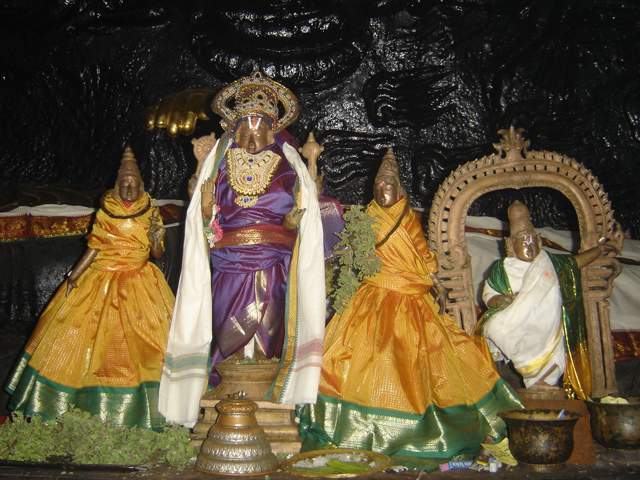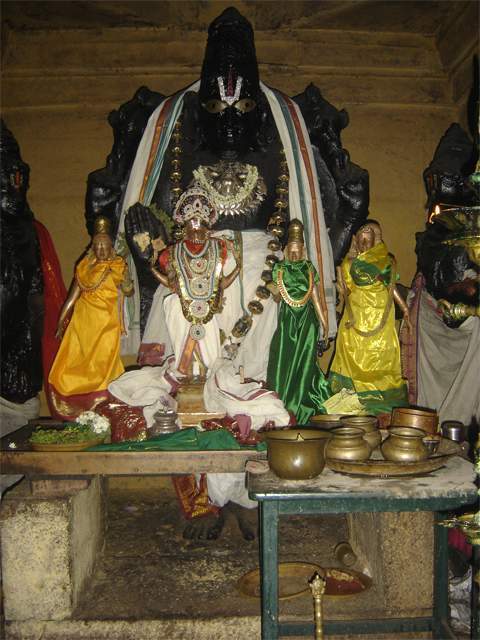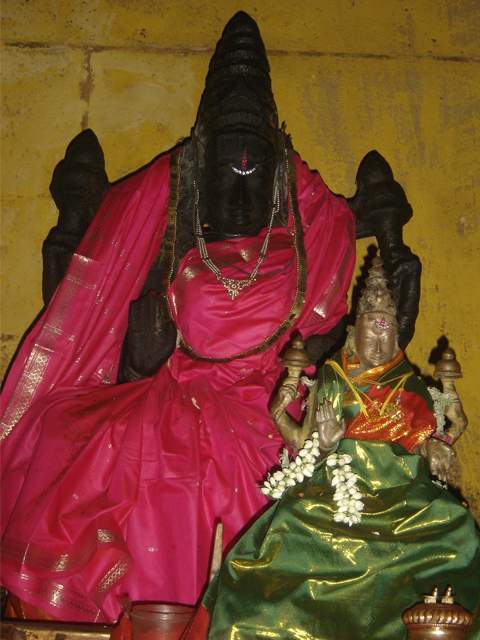samam kaya-siro-grivam
dharayann acalam sthirah
sampreksya nasikagram svam
disas canavalokayan
"One should hold one’s body, neck and head erect in a straight line and stare steadily at the tip of the nose"
Here Sri Krishna tells how we have to keep our mind and body in control. In the previous sloka He told about place and seat. The way one has to sit in a secluded place s, He explained how the surroundings and seat have to be and these are exterior to our body. Just because we have good surroundings and the seat is firm and good, we can not conclude that we have mastered yoga. Kayam = the upper part of the body [above navel], sira = head, grivam = neck, samam = all these three parts of our body have to be in the same vertical line. Acalam = without a shake, sthira = remain stable, dharayan = concentrating. It may appear that the two words acalm and sthira convey the same meaning. Actually, acalam is unshaken or undisturbed for a short while. Sthira means remaining stable for longer durations. So, to practice yoga, we have to select a proper place and find a firm seat and we have to sit erect with our body straight and concentrate. We may have a backrest to support sitting erect. Disas = at all directions, anavalokayan = not looking, we have to keep our sight steady and not allow to look at all directions. Here only the organ of sight- eyes- are mentioned, as it is the gate for all other organs. If we can control seeing, then all other sense activities will be controlled. Nasika = nose, agram = tip or beginning, sampreksya = look at. Eyes without looking at all directions should see only the tip of the nose. Arjuna got doubt as to whose nose we have to look at? Svam = one's own nose; that is person practicing yoga should look at his own nose tip. Keeping eyes wide open will distract attention at the happenings around. Closing the eyes may induce sleep. Both are impediments to yoga and so He says with eyes half closed or half open, just like the way Sri Andal explains in Her Thiruppavai pasuram 'anganmagyala...'. While looking at nose tip, ornaments like nose stud should not be there as they will also distractons of concentration. So in a solitude place sitting on a firm seat, and keeping his body straight , erect and steady, he should concentrate by looking at the tip of his own nose.
Thirumeyyam-Azhagiya singar mangalasasanam




No comments:
Post a Comment